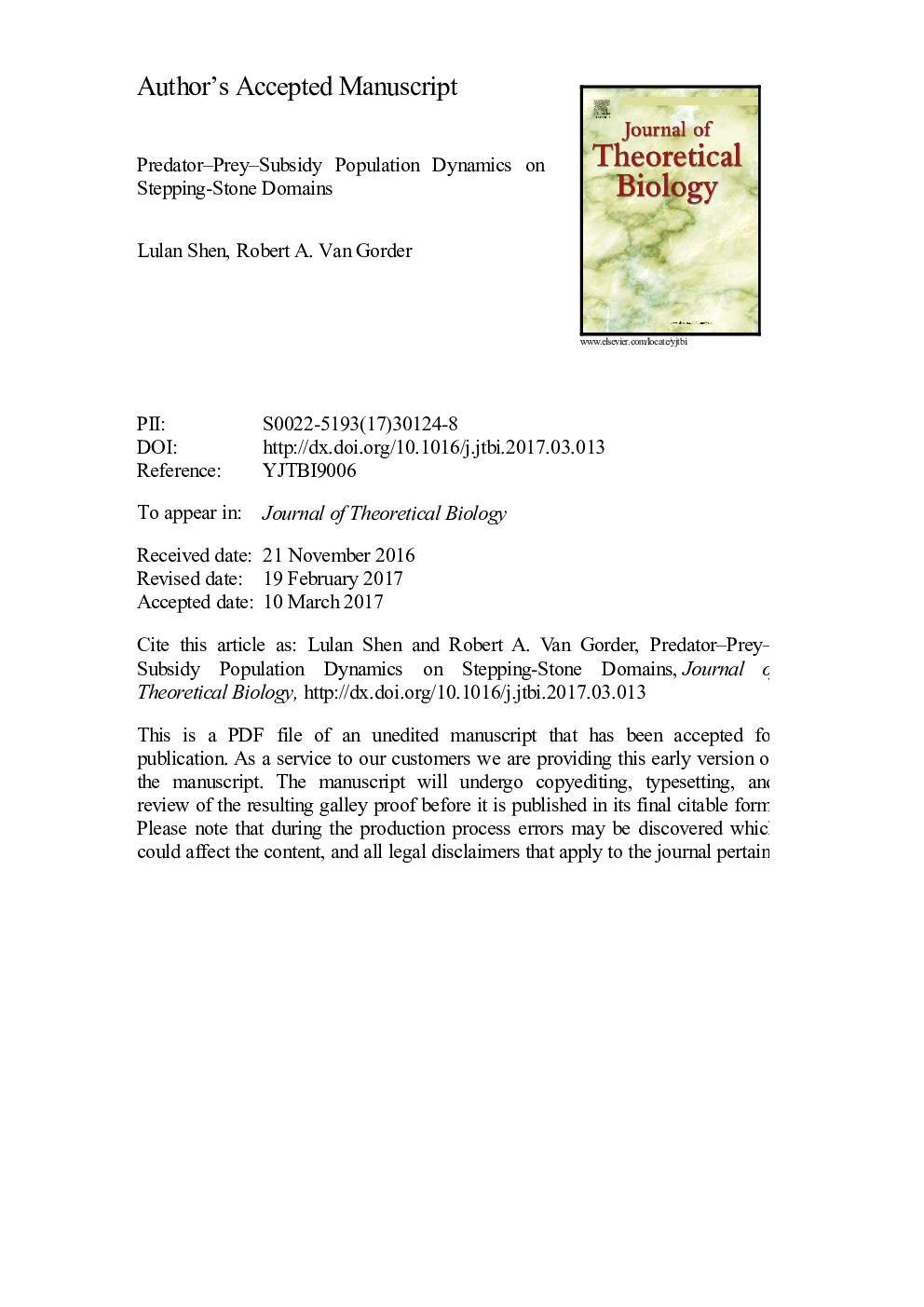| Article ID | Journal | Published Year | Pages | File Type |
|---|---|---|---|---|
| 5760061 | Journal of Theoretical Biology | 2017 | 15 Pages |
Abstract
Predator-prey-subsidy dynamics on stepping-stone domains are examined using a variety of network configurations. Our problem is motivated by the interactions between arctic foxes (predator) and lemmings (prey) in the presence of seal carrion (subsidy) provided by polar bears. We use the n-Patch Model, which considers space explicitly as a “Stepping Stone” system. We consider the role that the carrying capacity, predator migration rate, input subsidy rate, predator mortality rate, and proportion of predators surviving migration play in the predator-prey-subsidy population dynamics. We find that for certain types of networks, added mobility will help predator populations, allowing them to survive or coexist when they would otherwise go extinct if confined to one location, while in other situations (such as when sparsely distributed nodes in the network have few resources available) the added mobility will hurt the predator population. We also find that a combination of favourable conditions for the prey and subsidy can lead to the formation of limit cycles (boom and bust dynamic) from stable equilibrium states. These modifications to the dynamics vary depending on the specific network structure employed, highlighting the fact that network structure can strongly influence the predator-prey-subsidy dynamics in stepping-stone domains.
Related Topics
Life Sciences
Agricultural and Biological Sciences
Agricultural and Biological Sciences (General)
Authors
Lulan Shen, Robert A. Van Gorder,
